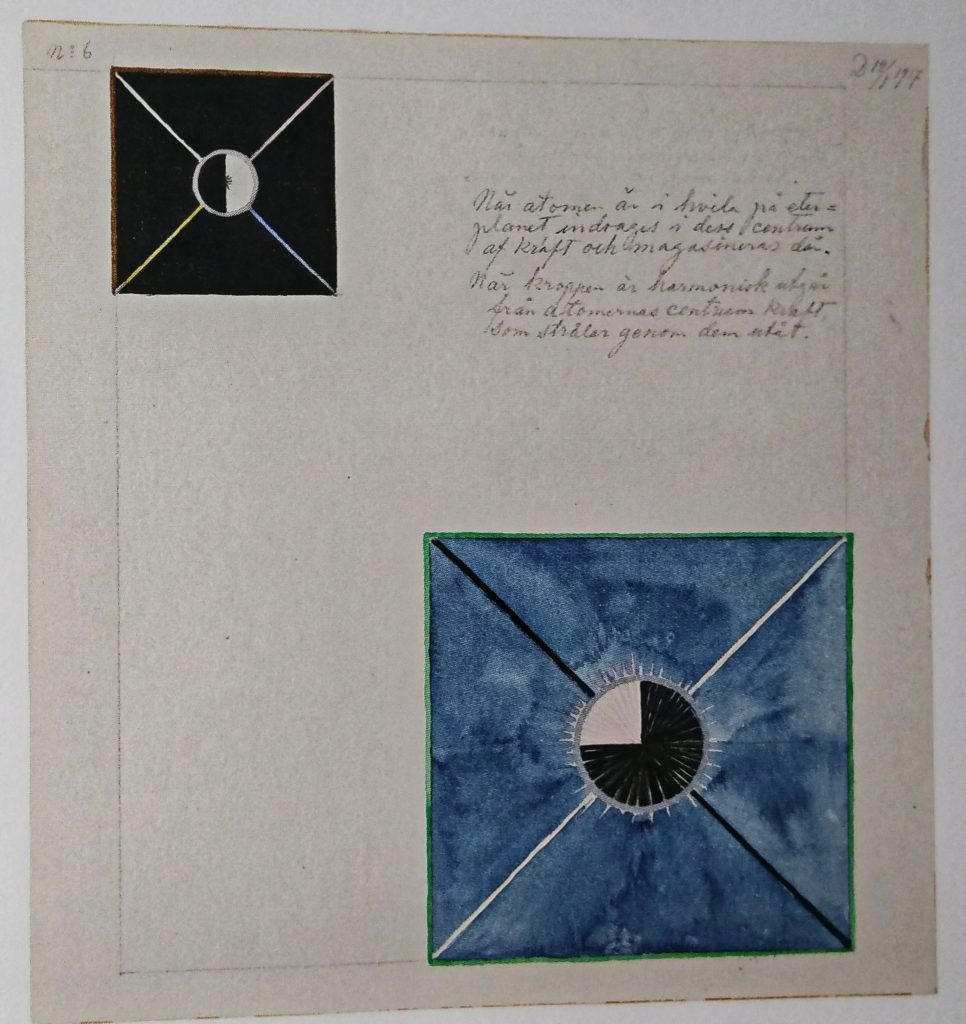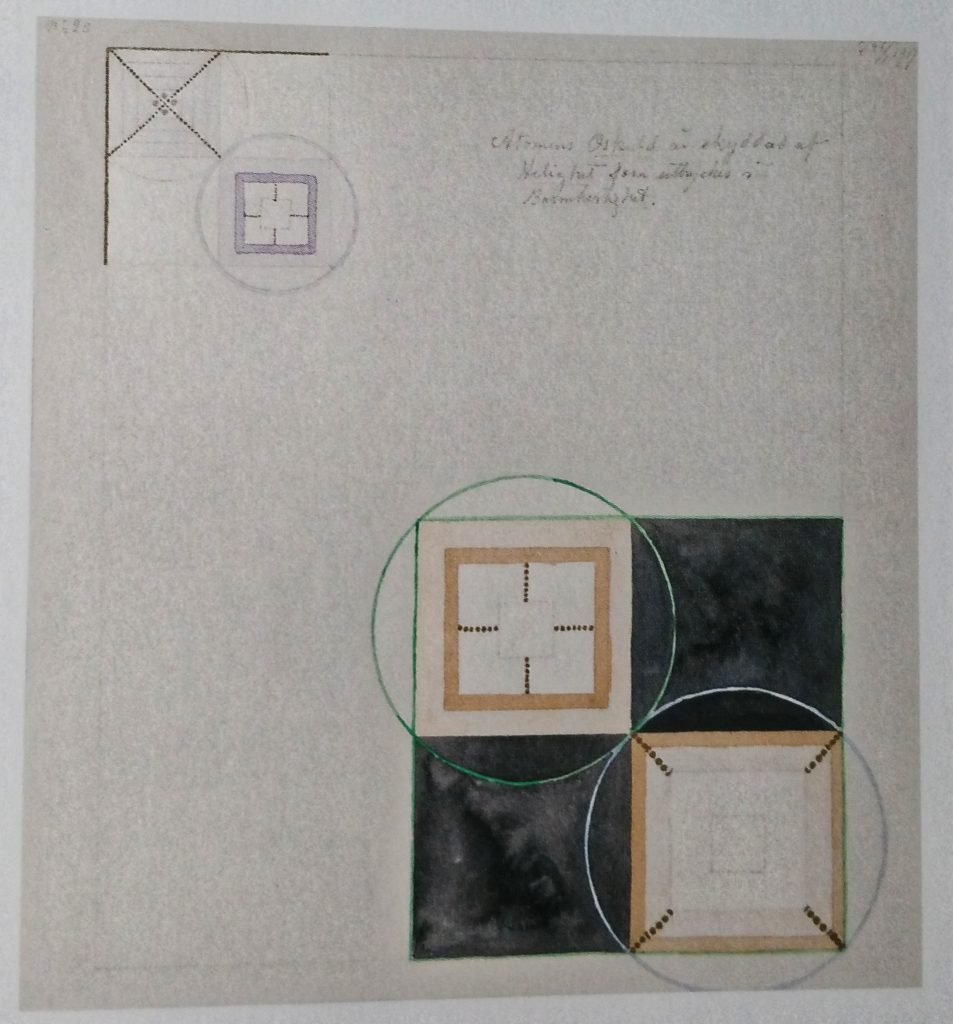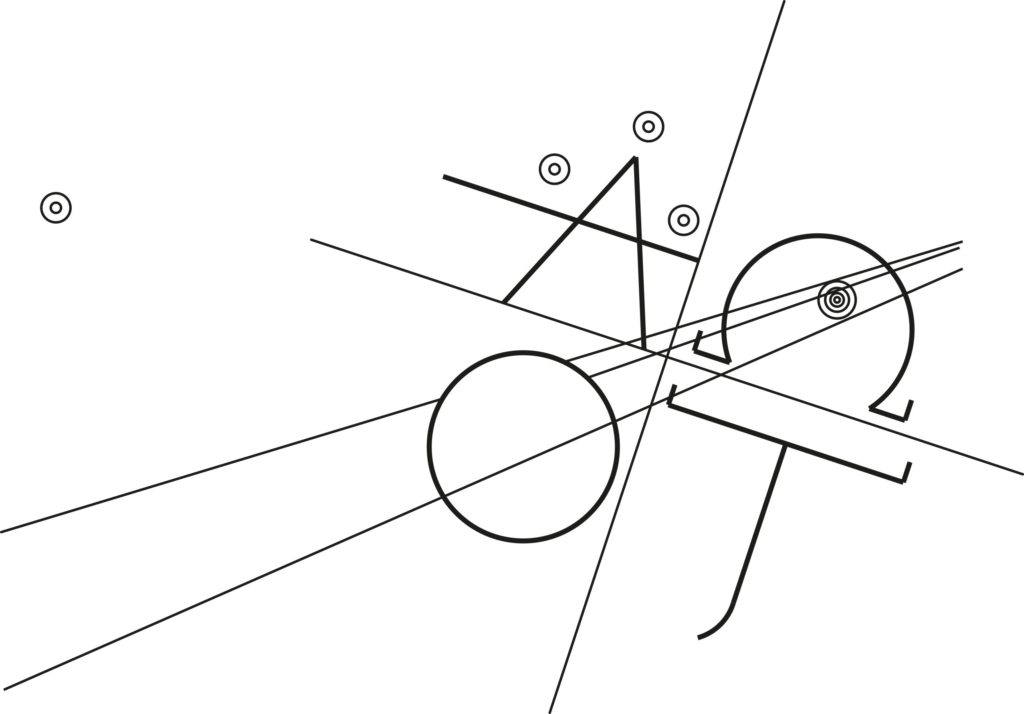
The aetheric vehicle of the soul is a concept that was initially posited by Plato and then the Neoplatonists, in particular Iamblichus and Proclus wrote at length on the topic. In very general terms the aetheric vehicle was seen as a means whereby the soul descended from the heavens on its way to being seated in a corporeal body and as it descended it took on various accretions or envelopes of planetary influences. The devout student was said to be able to reascend to the divine through meditation or theurgy depending on the outlook. Eventually the soul could reach the realm of the One or its perimeter. Through purging the vehicle of these dross outer garments it was able to reascend while the aspirant was still incarnated on the earthly plane.
Helena Blavatsky developed a rather elaborate breakdown of the aether or in eastern terms, the akashic. There are 7 elements, 4 are material and the 5th is the aether. This mysterious medium acts as the bridge between this life and the next. This aether is the grossest form of the akasha which Blavatsky equated with the astral light. Furthermore, the theosophical school of thought stated that everything that ever occurred was contained in the repository of the astral tablets. In fact we have documentation that Hilma Af Klint possessed the Swedish edition of The Secret Doctrine by Blavatsky (See: The Case of the Artist Hilma Af Klint, Ake Fant in The Spiritual in Art and Abstract Painting 1890-1985, Abbeville Press, 1986).
Hilma Af Klint was one artist in particular who was greatly influenced by theosophical thought on the matter of the aether and astral vision. Her Atom Series is of particular interest as these paintings deal directly with her vision of the astral or aetheric and its relation to the somatic sphere.
These paintings are almost didactic in nature as they are in a series and each is framed by a text of her own composition. She developed clairvoyance and received transmissions that she translated in her paintings allowing the influx of inspiration to guide her hand. The Atom Series of paintings are images that she perceived through her mind’s eye. She considered herself to be an active participant in the various planes, the lower underworld where elemental forces seek to disturb man’s physical and mental composition, the middle plane of the physical world where man seeks to reach a harmony in his inner and outer being, and the astral plane assisting man in his quest to follow his path.
The Atom Series is particularly important because they are some of the last ones she would create prior to a crisis that she experienced through her contact with Rudolph Steiner. Steiner was adamant that one could not achieve a direct depiction of the spirit realm. Steiner’s approach would have been pure anathema to Klint’s initial project. Unfortunately she took his admonishments to heart leading her to a crisis and ceased all painting from 1920-1922.
For sake of concision I have only included the image of no. 6. It is, however, worth reading the initial accompanying glosses of those leading up to that frame:
No.1.
The midpoint of the universe consists of innocence.1. Uncompromising truth 2. Dignity 3. Humility 4. Mercy
No. 2.
Every Atom has its own midpoint, but each midpoint is directly connected to the midpoint of the universe.
No. 3.
The body must be mediated by going to its center and drawing from these new forces
No. 4.
Through its longing to create ever more beautiful forms first on the etheric plane, and then in matter, the body becomes capable of being penetrated by light.
No. 5.
The body is capable of rising above its earthly form by listening to the superphysical powers.
No. 6.
When the atom is at rest on the etheric plane, its center absorbs the energy that is stored there. When the body is in harmony, energy radiates outward from the center of the atom.
But the most unique portion of her thought is in the next two theorems where Klint describes a certain reciprocity:
“When the atom expands on the etheric plane, the physical part of the earthly atom begins to glow, and On the etheric plane the atom alternates constantly between rest and activity,. At rest it retreats inward, this causes the terrestrial atom to emanate energy. The energy pushes inward.”
This duality takes on a balancing pattern somewhat like systole and diastole where the etheric and material planes are likened to two compartments of a single heart.
There is in Klint’s cosmos a mirrored and inverted process that takes place in the earthly counterpart of the atom. They are reflexive, both the celestial and the earthly. However we cannot state conclusively which atom is shadowing which. Later she states that “The Atom’s strength increases as it senses its dependence upon divine energy, it is: “inexhaustible and incomprehensible life itself.” And then her observations take a Christocentric turn by mandating that “The atom is on its way to freely and deliberately transform itself in observance with the lord jesus, who has paved the way for all humanity.” And in her own glossary of her terms and abbreviations Hilma Af Klint wrote: “Christus [Christ] = the core of the work.” Klint’s atoms are not disembodied building blocks of the universe but extensions of an anthropomorphized compassionate sacrificial spirit. In this vein her dictums take on an almost doxological quality.
The progression in the images of this series is from the color blue to predominantly black, associated with the element of spirit (or white, the extremities of the spectrum).

To follow Klint’s world-view is to observe a universe where the base elements and atoms have the capacity to learn, evolve, and possess compassion. That which is above, and that which is below interact and transfer as well as alternate. They are depicted as separated fields and yet conjoined in their duality that is ultimately linked to a greater being.
I began my investigation as I initially detected similarities between Klint’s grid of her Atom Series and The Grid Sigil. Her Atom depictions are replete with the elements of the cross, square and circle in direct explicit reference, through her text, to the aether or eter in her exact terms. Perhaps Klint’s Atom Series offers insight into the Grid in its evolutionary stages, that the Grid took on gradual accretions in its development. In fact, I was moved to write about her work having had the good fortune to see much of it in person at the Guggenheim earlier this year (the grandeur and scope of her work must be witnessed in person to feel the sheer force and beauty of all it has to offer).

In a recent interview with Harper Feist of Thelema Now, she addressed the similarity of the Grid Sigil to Constantine’s labarum. The likeness between the two is clearly obvious with the cross and the alpha and omega. I replied that there is definitely a christian mystical dimension to the Grid Sigil but that it was not a great concern in my own work for the time being. Considering Klint’s work of the Atom Series however, does impress upon me the unavoidable component of the Osirian current that is at the background of most magical formula down to the somatic level. Breath is the crossroads of life and death of the flesh, hence the term pranayama, prana meaning life, and yama death. Perhaps Klint’s perspective is part of the residue of the Piscean age which she herself felt was ineluctable. Her art presents the notion of atoms as the heart of matter and the matter of heart expressed in a deeply sensual and colorful cartouche. Klint’s implication of a nascent caritas as integral to the development of the primordial components of creation point toward certain rare provisions for aspirants beyond a purely rational scope.
Note: For Hilma Af Klint’s writing and images I have relied almost entirely on HILMA AF KLINT: Notes and Methods, Chicago University Press, 2018. There is a large amount of her work in Swedish that has yet to be translated. Hopefully this will change.